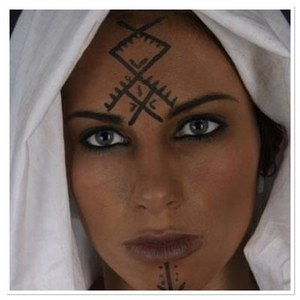Whichever is correct, and maybe they all are, the Berbers are a fierce people who have been present in North Africa before the Phoenicians founded Carthage. No Empire could ever successfully manage to make them loyal subjects, instead all the mighty historic forces had to be content with existing alongside the Berbers if they wanted to obtain any kind of loyalty from them and sometimes they even had to pay tributes to the Berbers..
The Greeks were the first to call them Berbers (barbarians = non-Greek speakers), but they were also called “Mauri” referring to people from Mauritania, (an ancient Berber kingdom which existed from the 3rd century BC to the 7th century in the far north of modern-day Morocco and Algeria) and this later changed to “moros” in Spanish and “moors” in English. Today they are distributed in an area stretching from the Atlantic Ocean to the Siwa Oasis in Egypt, and from the Mediterranean Sea to the Niger River. Some Berbers are still nomadic people with seasonal migrations, others are settled permanently and farm for a living, like their ancestors. Like many other ancient tribes they too are weavers and their weaving is predominantly for domestic use. Thicker piled carpets for heat and kilims for bedding and clothing. The design of Moroccan carpets are very primitive compared to other countries, but that is what has made them so appealing to the West since the mid-20th Century.
The Berbers known as Amazigh in Morocco is a very mysterious tribe with many mysterious beliefs and rituals. One such ritual is the facial tattoos that the women of the tribe get whenever they come of age or reach certain milestones, such as marrying, giving birth to their first child, etc. The first tattoo celebrating their coming of age is a line or lines that stretches from the lower lip to the bottom of the chin. This represents a palm tree. Whenever there are dots put around it, it represents seeds that in turn represents powers of fertility. As each milestone is reached in their lives more tattoos and motives are added. Each motif is believed to carry special magical powers of protection, especially against the evil spirits. There are tattoos put on other parts of the body as well as their hands and feet, seen as the most vulnerable body parts. Every single motif is applied only as protection and bestowing power onto the receiver.
What is intriguing is that it is exactly these motifs that are also used in the very popular Beni Ourain and other Berber carpets. The reason for this is that with the Arabization of North Africa some centuries ago the laws of Islam prohibited tattooing and as such the Berber women adapted this custom of theirs to apply temporary henna tattoos and also to include these protective motives in their weaving, whether it be carpets or clothing. Even their jewellery became talismans incorporating all good wishes, powers and protection that their tattoos once did. The diamond pattern, that the Beni Ourain carpets are especially known for, is specifically for protection of the owner of the rug.
Sources
- http://www.egyptorigins.org/berbers.htm
- https://en.wikipedia.org/wiki/Berbers
- https://en.wikipedia.org/wiki/Mauri_people
- https://en.wikipedia.org/wiki/Mauritania
- http://ethnicjewelsmagazine.com/facial-tattooing-of-berber-women-by-sarah-corbett/#prettyphoto[group]/0/
- http://www.aui.ma/personal/~GRADUATE_S/carpethome.htm
- https://japanesemythology.wordpress.com/weaving-goddesses-of-japan-and-elsewhere-in-the-world/
- http://moroccotravelblog.com/2009/04/24/berber-carpet-weaving/
- https://en.wikipedia.org/wiki/Moroccan_rugs
- https://en.wikipedia.org/wiki/Berber_carpet



